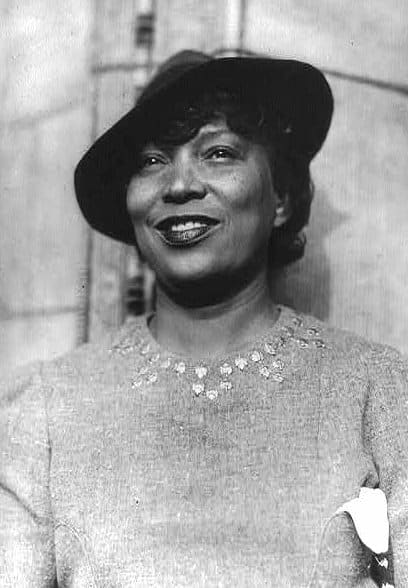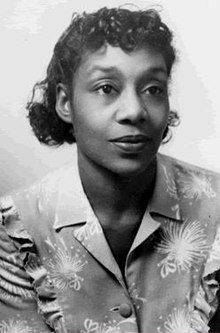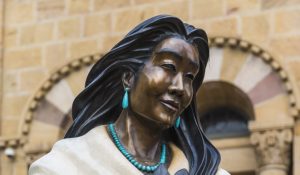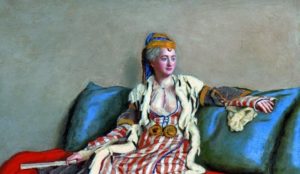Around the 1920s in Harlem, New York, a new movement celebrating African American art and culture thrived. The “New Negro Movement,” as it was called at the time, gathered together artists, poets, authors, and intellectuals, and had a lasting effect on the development of African American culture. This literary and social movement became known as the Harlem Renaissance, and helped give a voice to many black women who were able to achieve recognition for their art for the first time. Here are some of the successful women who flourished as authors, poets, and artists during the Harlem Renaissance:
Zora Neale Hurston

Born in 1891 in Eatonville, Florida, Zora Neale Hurston was raised in a unique environment – an all-black town founded by her grandfather. This upbringing instilled in her a strong sense of community and cultural identity, which would later influence her writing.
Hurston moved to New York City in 1925 to study anthropology at Barnard College. There, she joined the thriving literary scene of Harlem and became friends with other prominent figures of the Harlem Renaissance, like Langston Hughes and Wallace Thurman. This group published a literary magazine called “FIRE!!” in 1926, for which Hurston contributed “Color Struck, A Play in Four Scenes.” The magazine tackled controversial themes of sexuality and racial identity, but its short-lived existence didn’t diminish Hurston’s rising literary talent.
Hurston is most famous today for her critically acclaimed 1937 novel, Their Eyes Were Watching God, which explores themes of gender, race, and self-discovery through the eyes of protagonist Janie Crawford. Hurston’s use of vernacular African American speech and her portrayal of Southern black life were groundbreaking for the time. However, her work also faced criticism for sometimes reinforcing stereotypes. Despite this, after a period of obscurity, interest in her work was revived in the 1970s by Alice Walker, and she is now considered one of the most influential African American writers of the 20th century.
Dorothy West

Dorothy West, born in Boston in 1907, was a novelist and short story writer who brought a fresh perspective to the Harlem Renaissance. Relocating to Harlem at the young age of 19, she quickly became involved in the literary circles and befriended established figures like Langston Hughes, who affectionately nicknamed her “The Kid” due to her youthful energy.
West’s work is known for its sharp wit and social commentary. In 1934, she made a significant contribution to the movement by founding Challenge magazine, a groundbreaking publication that featured realistic portrayals of everyday life for black Americans – a stark contrast to the idealized or romanticized narratives that were often presented. Challenge included work by prominent writers like Margaret Walker and Ralph Ellison, further solidifying its place in the Harlem Renaissance.
At a time when publishing opportunities for women of color were scarce, Dorothy West was a trailblazer. She started her career as a journalist and achieved a feat many considered unlikely – publishing a novel, The Living Is Easy, in 1948. While it received positive reviews, it wasn’t a commercial success initially. However, its reprinting in 1995 garnered critical acclaim and became a bestseller, solidifying West’s place as a literary force.
Nella Larsen

Nella Larsen’s literary career, though brief, was a significant part of the Harlem Renaissance. Originally a nurse and librarian, Larsen’s foray into writing began after she moved to Harlem in the 1920s with her husband. Immersed in the vibrant literary scene, she found inspiration and began crafting her own novels.
Larsen published three novels during the Harlem Renaissance: Quicksand (1928), Passing (1929), and Sanctuary (1930). Her works explored themes of racial identity, particularly the experiences of mixed-race characters. Passing, her most acclaimed work, delves into the complexities of racial passing – the act of a person of mixed race identifying as white. The novel’s exploration of societal pressures and personal struggles resonated with readers and critics alike.
Despite her critical success, Larsen’s personal life was marked by financial difficulties and depression. Following a difficult divorce in 1933, she retreated from the literary world and returned to her career as a nurse. While she stopped writing after the Harlem Renaissance, her novels continue to be studied and celebrated for their nuanced exploration of race and identity.
Augusta Savage

Augusta Savage, a sculptor and influential art teacher, was a major figure in the Harlem Renaissance art scene. Despite facing constant financial struggles throughout her life, her artistic talent and dedication to her community earned her recognition and support.
Savage’s artistic journey began early. She honed her skills by creating sculptures from the natural clay found near her hometown in Green Cove Springs, Florida. Her talent was evident, and she often won local contests with her clay creations, all while working in steam laundries to support herself and her family.
In 1925, her determination and talent were recognized when she won a scholarship to the prestigious Royal Academy of Fine Arts in Rome. Unfortunately, the scholarship only covered tuition, not travel or living expenses. Undeterred, the Harlem and Greenwich Village African American communities rallied together and raised funds to send her abroad. This outpouring of support from her community is a testament to the impact she already had as an artist.
Finally, in 1929, Savage was able to travel to Paris and study at a leading art school. While in Europe, she showcased her work at various exhibitions in France, Belgium, and Germany, receiving acclaim and awards for her sculptures.
Upon returning to Harlem in 1934, Savage established the Savage Studio of Arts and Crafts. This studio became a vital resource for aspiring black artists, fostering the careers of future talents like Jacob Lawrence, Norman Lewis, and Gwendolyn Knight. Savage’s dedication to mentorship and artistic education empowered the next generation of African American creators.
One of Savage’s most recognizable works is the sculpture “Gamin,” a portrait bust of her nephew. This piece, imbued with both realism and compassion, captured the essence of a young black boy and became a defining moment in her career. “Gamin” was also instrumental in securing her the Julius Rosenwald Fellowship, which funded her studies in Paris.
Augusta Savage’s legacy extends far beyond her sculptures. She was a champion for racial equality in the art world and a beacon of inspiration for countless black artists who followed in her footsteps. The impact of the Harlem Renaissance might have faded with the Great Depression, but the artistic and social contributions of figures like Augusta Savage continue to resonate today.
Though the Harlem Renaissance began to fade when the Great Depression struck in 1929, the movement had a lasting impact on African American culture and art. The contributions of these women of the Harlem Renaissance inspired many artists after them, and their impact is still felt to this day.
Keri is a blogger and digital marketing professional who founded Amazing Women In History in 2011.






Leave a Reply